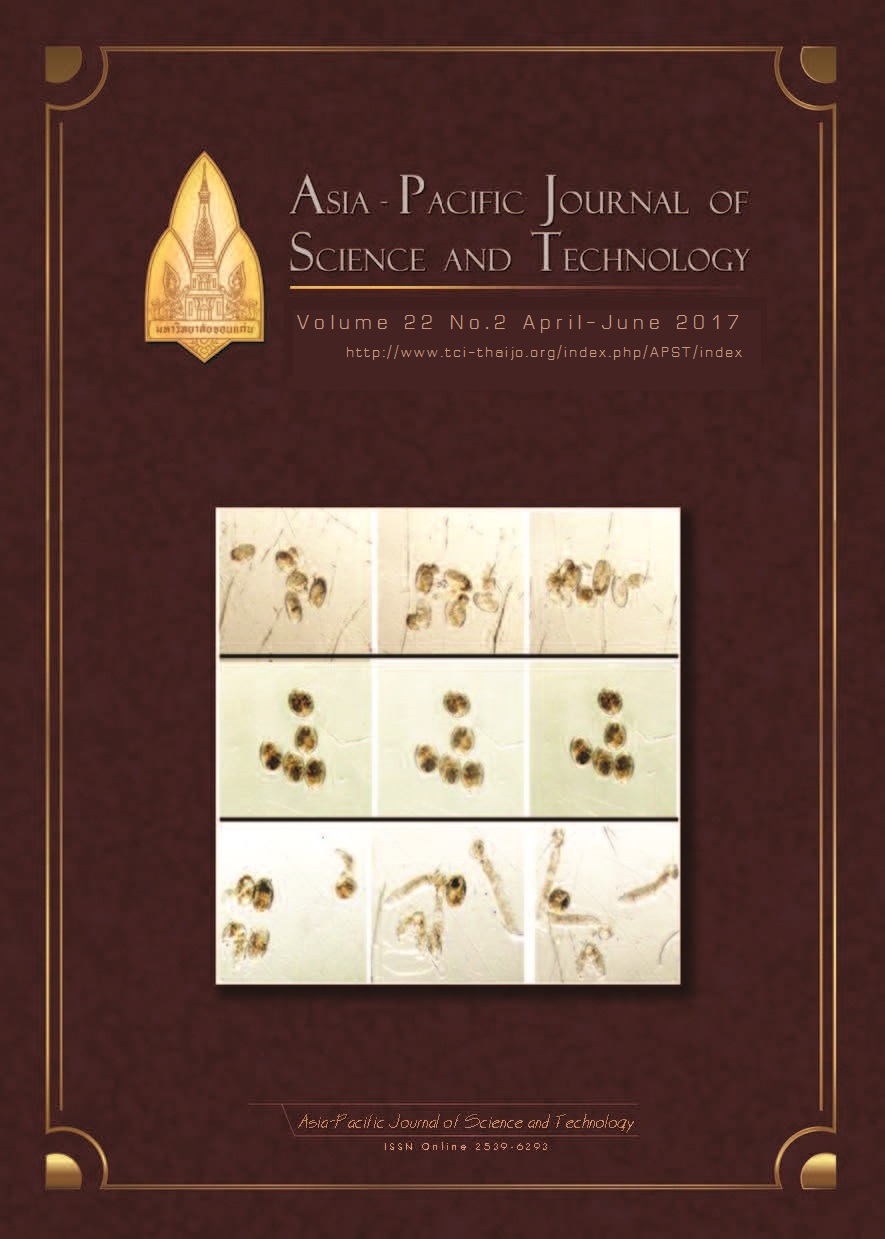Blind 2D signal direction for limited-sensor space using maximum likelihood estimation
Main Article Content
Abstract
Humans can automatically turn toward the origin of the sound that they hear through their both ears. This capability is crucial in daily life. A computer that can recognize the direction of the sound source is also useful for many types of applications. A proposed blind 2-dimensional (2D) signal direction using two recording sensors is developed under a limited space between the sensors in noise free environment. The proposed 2D source direction method is based on the time – delay estimation using maximum likelihood estimation by forming a histogram of power weighted spectrum corresponding to attenuation and time-delay index. The histogram - boundary method is also proposed which relates to a distance of the two microphones. In addition, the fine-tuned number of time-index bins were investigated to figure out the proper number of bins for the histogram. Given by a narrow space i.e. 3.2 centimeters, the proposed method can acceptably direct the sound-source position. In experimental testing on real-audio sources, the proposed method has demonstrated a higher level of directional performance compared with an existing method.
Article Details
References
[2] Algazi, V.R., Avendano, C., Duda, R.O., 2001. Elevation localization and head-related transfer function analysis at low frequencies. The Journal of Acoustical Society of America 109, 1110-1122.
[3] Chen, L., Liu, Y., Kong, F., He, N., 2011. Acoustic source localization based on generalized crosscorrelation time-delay estimation. Procedia Engineering 15, 4912-4919.
[4] Lima, M.V., Martins, W.A., Nunes, L.O., Biscainho, L.W., Ferreira, T.N., Costa, M.V., Lee, B., 2015. Efficient Steered-Response Power Methods for Sound Source Localization Using Microphone Arrays. IEEE signal processing letters 22, 1-15.
[5] Marinescu, R.S., Buzo, A., Cucu, H., Burileanu, C., 2013. Applying the Accumulation of Cross-Power Spectrum Technique for Traditional Generalized Cross-Correlation Time Delay Estimation. International Journal On Advances in Telecommunications-IARIA 6, 98-108.
[6] Nakashima, H., Kawamoto, M., Mukai, T., 2010. A localization method for multiple sound sources by using coherence function. In: Signal Processing Conference, 2010 18th European. IEEE, 130-134.
[7] Pourmohammad, A., Ahadi, S.M., 2012. TDE-ILD-HRTF-Based 2D Whole-Plane Sound Source Localization Using Only Two Microphones and Source Counting. International Journal of Information and Electronics Engineering 2, 307-313.
[8] Yilmaz, Ö., Rickard, S., 2004. Blind separation of speech mixtures via time-frequency masking. IEEE Transactions on Signal Processing 52, 1830-1847.

